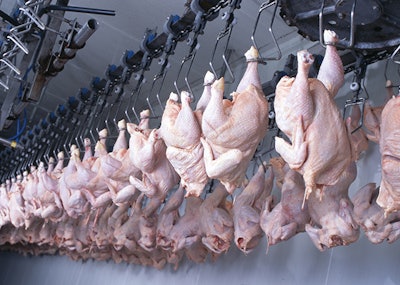
Poultry processing facilities faced increased workforce challenges this spring due to the COVID-19 global pandemic. Robotic and automated technology solutions could help reduce labor issues and improve worker safety.
“The problems that people have and the solutions that robotics provide is pretty common across a wide variety of industries,” Marty Linn, Director of the Tyson Foods Manufacturing Automation Center, explained September 8 during the Robotic Industries Association (RIA) Robotics Week 2020 Conference.
“The challenges are the same no matter the industry. Are you able to automate the task easier for team members? How do you improve your product quality? How do you become more efficient at what you produce?”
Enhancing the worker experience
The Tyson Manufacturing Automation Center opened in 2019 and is designed to help the company design more automation and robotics for its food production plants.
“Traditionally, the processing industry has been really manual-based. We try to look at areas that can be improved and can help team members do their jobs better. This is really exciting to me and I’m really looking forward to the future,” Linn said.
“Workforce issues have always an issue for the industry. How do you make people more efficient? How do you get enough people to actually do the work that we have? The impact and influence of COVID-19 has just exacerbated the problem.”
During COVID-19, many poultry plants were forced to temporarily shut down protection to prevent the spread of the virus. This made it more challenging than ever to find and retain qualified labor.
The use of robotics in processing plants could create additional space between employees in facilities, ensuring that social distancing protocols are followed.
“We want to design robots that can support employees needs in processing plants. It also has to be able to work in an extremely challenging environment,” said Linn. “At the end of the day, all roboticists are interested in solving problems. That’s key to the acceptance and that’s key in determining where robotics will go in the future.”
Tyson Foods, according to the WATTAgNet Top Poultry Companies Database, is the largest broiler producer in the United States and the second largest in the world, trailing only Brazil-based JBS. In 2019, Tyson Foods processed 200.47 million pounds of ready-to-cook chicken on a weekly basis. The company is headquartered in Springdale, Arkansas.
View our continuing coverage of the coronavirus/COVID-19 pandemic.
Like what you just read? Sign up now for free to receive the Poultry Future Newsletter.


















